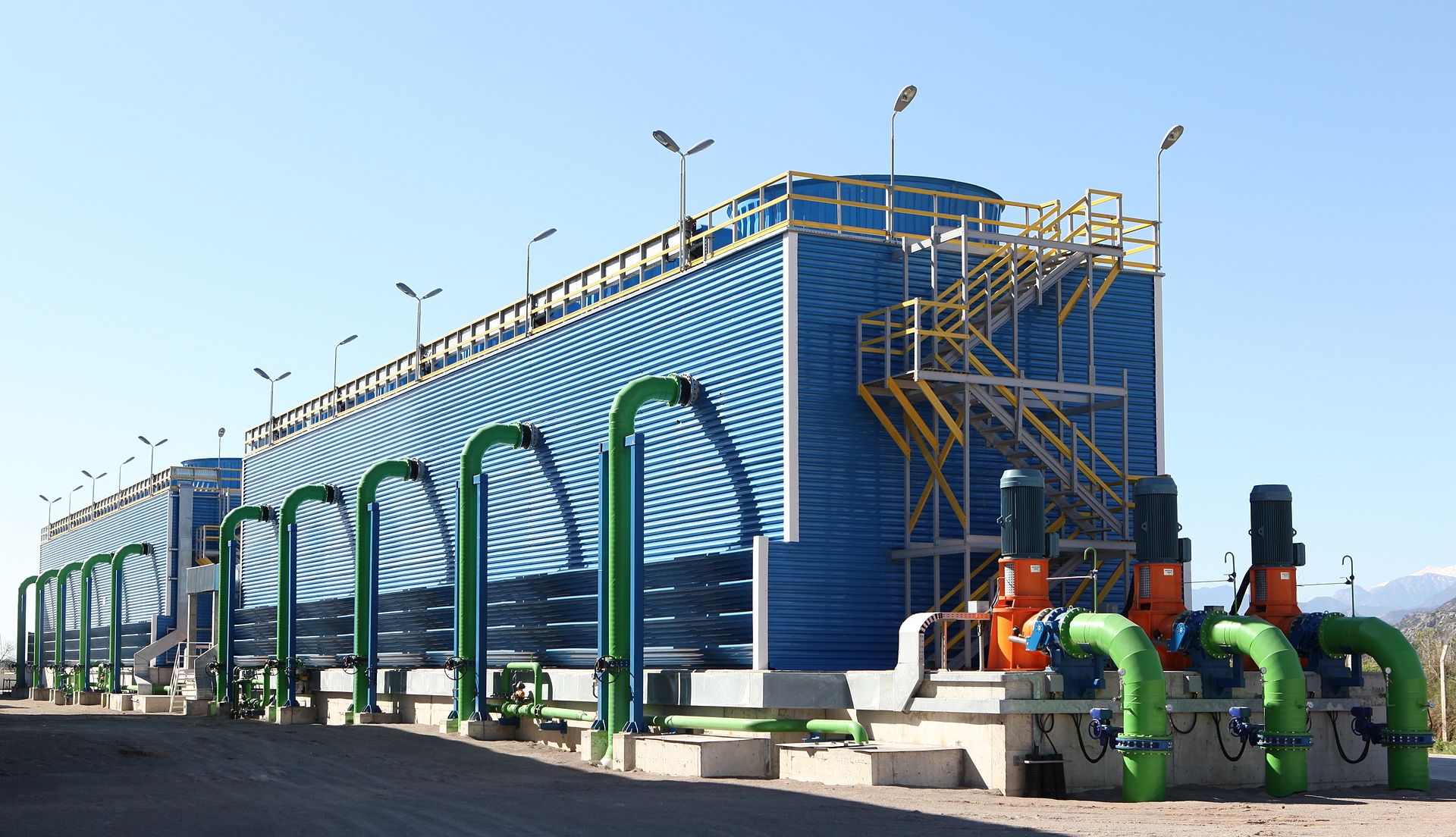Cooling Water Chemistry
Effective chemical management of cooling water to maintain clean and efficient cooling surfaces free of scale and corrosion to maximize the life of your equipment
Water Dynamics, Inc.

Effective chemical management of cooling water to maintain clean and efficient cooling surfaces free of scale and corrosion to maximize the life of your equipment

Cooling water is critical for a variety of applications. Whether it is HVAC, comfort cooling, or
process cooling, we understand the importance of preventing deposition, corrosion and microbiological growth to allow maximal
heat transfer. Water Dynamics produces a wide range of products to control cooling water chemistry. In addition, Water Dynamics
is leading the way in Legionella prevention and can help your facility comply with the newly passed ASHRAE Standard 188-2015
and NY State Regulations for
Legionella prevention. Our team consists of highly qualified water treatment specialists, from Certified Water Technologists (CWT)
to Ph.D. scientists, and we can provide custom programs to ensure your cooling systems run with maximum efficiency, reduced risk
to health and safety, and reduced risks of liability.
Click here to contact a Water Dynamics representative now.
Benefits:
-Increased cycles of concentration to save water and money
-Prevention of scale deposition
-Protection from corrosion
-Reduction of microbiological growth and organic material
-Compliance with ASHRAE Standard 188-2015
-Compliance with New York regulations
-Protection of delicate chiller and heat exchanger metallurgy
Basics:
Scale Prevention
As water evaporates and is replaced by raw water, the mineral content of cooling tower water increases. These increases in minerals are
referred to as cycles of concentrations. Concentrating water is valuable
because it saves water usage and makes water less corrosive to metal. However, if not treated with an appropriate chemical
program, increased cycles of concentrations can lead to scale deposition on cooling surfaces. Water Dynamics’ library of products can prevent scale formation
through the use of polymer technology and crystal modification, which makes minerals less adherent to metals. These minerals
stay suspended in water and are purged from the system through the normal tower bleed.
Corrosion Prevention
Corrosion happens as metals are oxidized (meaning the metal atoms lose an electron) from their high-energy state achieved during
manufacturing to a lower-energy state. This results in metal loss and damage to valuable equipment. Water Dynamics provides a
variety of products that passivate the metal components to provide a protective film, which protects against corrosion processes. Water
Dynamics can tightly monitor metal corrosion through the use of metal coupons, which act as a proxy for corrosion, indicating
when metal is being lost from the system.
Microbiological Growth Prevention
Growth of microbiological organisms (bacteria, viruses, fungi and algae) can lead to loss of cooling efficiency, resulting in
greater energy usage and costs. Over time, these microorganisms form slime that coats metal surfaces and leads to
under-deposit corrosion and quite frankly poses a serious health concern to people in and around your facility. In a recent
outbreak in New York City, 12 people died from contracting Legionnaire’s Disease due to the growth of dangerous Legionella
pneumophila in cooling towers in the Bronx. This has prompted New York state officials to pass regulations that require
building owners to register cooling towers, as well as test for and remediate any Legionella growth. Click
here to learn more
about the Legionella outbreak and how Water Dynamics can help your facility prevent Legionella growth and
comply with NY
State Regulations.
At Water Dynamics, we provide water treatment solutions, pure and simple™